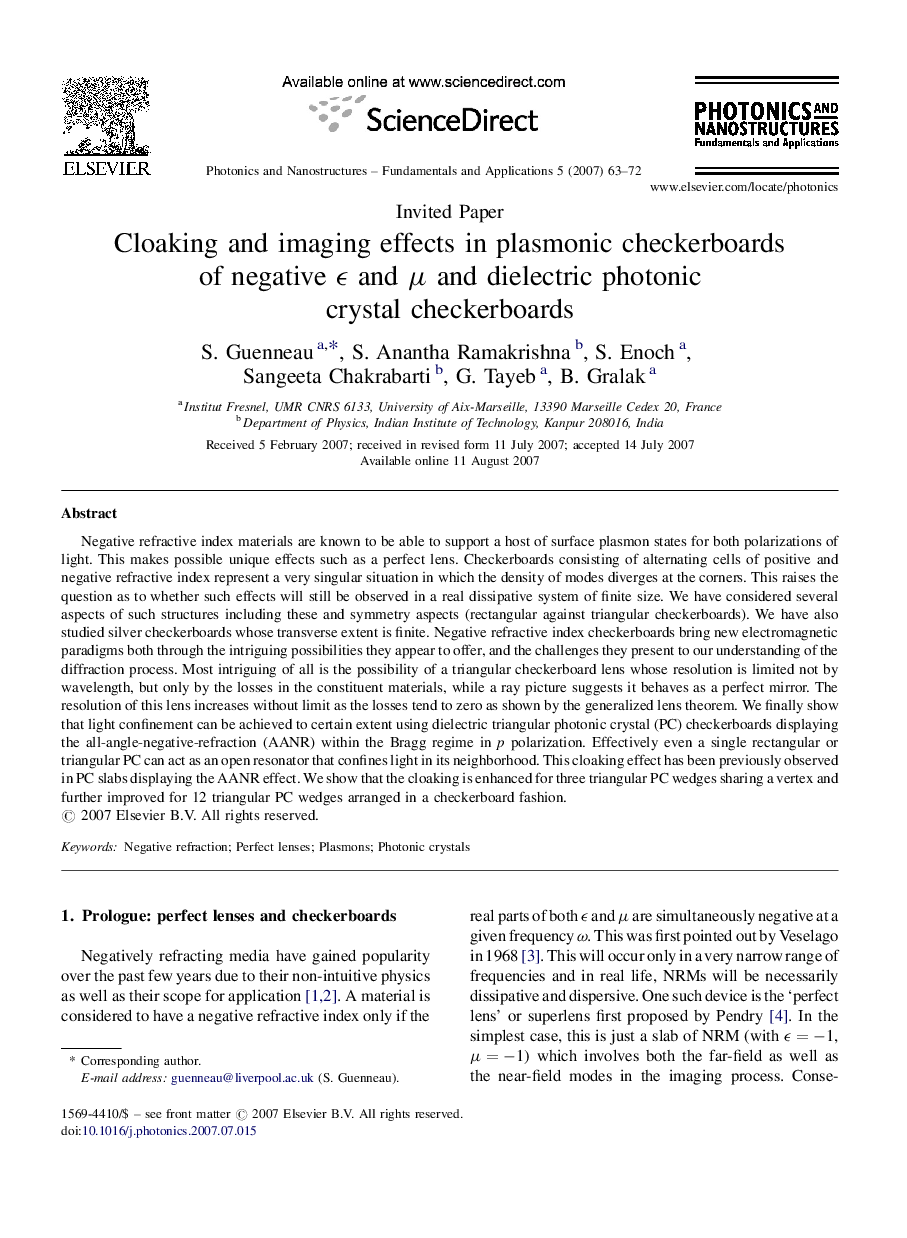| کد مقاله | کد نشریه | سال انتشار | مقاله انگلیسی | نسخه تمام متن |
|---|---|---|---|---|
| 1543120 | 1512838 | 2007 | 10 صفحه PDF | دانلود رایگان |

Negative refractive index materials are known to be able to support a host of surface plasmon states for both polarizations of light. This makes possible unique effects such as a perfect lens. Checkerboards consisting of alternating cells of positive and negative refractive index represent a very singular situation in which the density of modes diverges at the corners. This raises the question as to whether such effects will still be observed in a real dissipative system of finite size. We have considered several aspects of such structures including these and symmetry aspects (rectangular against triangular checkerboards). We have also studied silver checkerboards whose transverse extent is finite. Negative refractive index checkerboards bring new electromagnetic paradigms both through the intriguing possibilities they appear to offer, and the challenges they present to our understanding of the diffraction process. Most intriguing of all is the possibility of a triangular checkerboard lens whose resolution is limited not by wavelength, but only by the losses in the constituent materials, while a ray picture suggests it behaves as a perfect mirror. The resolution of this lens increases without limit as the losses tend to zero as shown by the generalized lens theorem. We finally show that light confinement can be achieved to certain extent using dielectric triangular photonic crystal (PC) checkerboards displaying the all-angle-negative-refraction (AANR) within the Bragg regime in p polarization. Effectively even a single rectangular or triangular PC can act as an open resonator that confines light in its neighborhood. This cloaking effect has been previously observed in PC slabs displaying the AANR effect. We show that the cloaking is enhanced for three triangular PC wedges sharing a vertex and further improved for 12 triangular PC wedges arranged in a checkerboard fashion.
Journal: Photonics and Nanostructures - Fundamentals and Applications - Volume 5, Issues 2–3, October 2007, Pages 63–72